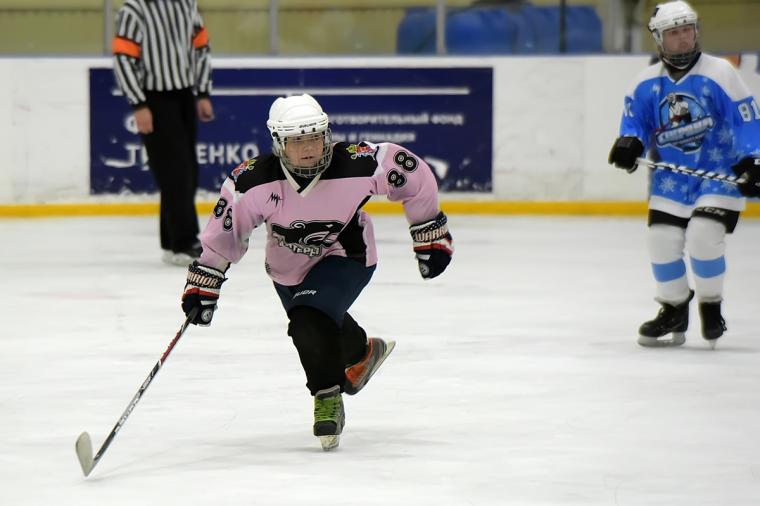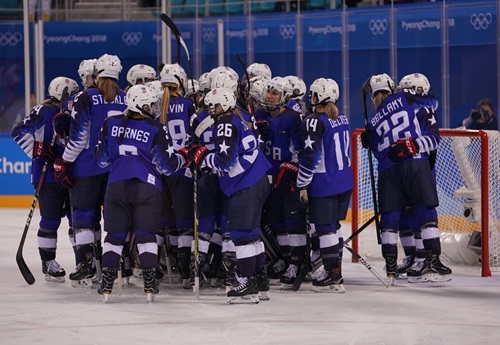
More than 25 years after women’s ice hockey made its debut in the Olympics, the puck dropped for the first time at the Professional Women's Hockey League (WPHL).
The PWHL, conceived in in 2019 after the Canadian Women's Hockey League collapsed, has brought together the majority of the world's top players on a paid basis and as a result, it stands to impact youth female ice hockey nationwide, including at the youth level.
Actually, especially at the youth level.
A total of six teams will compete during the inaugural season: Montreal, Toronto, New York, Boston, Ottawa and Minneapolis–Saint Paul.
It’s not the first women’s pro hockey league. According to Wikipedia, the Premier Hockey Federation (PHF) operated in the United States and Canada between March 2015 and June 2023. The league was originally named the National Women's Hockey League (NWHL). The PHF ceased operations in late June “after key elements of the league, including its intellectual properties, were purchased by the Mark Walter Group and BJK Enterprises led by Mark Walter and Billie Jean King, respectively. Both businesses had entered a partnership with the Professional Women's Hockey Players Association (PWHPA) in May 2022, with the intent to create a new professional women's ice hockey league in North America.” (The new PWHL was announced in August 2023.)
Additional women’s leagues have played, including the Western Women's Hockey League (WWHL) in Canada, which ran between 2004 and 2011. (At the collegiate level, there is the annual NCAA women's ice hockey tournament, officially known as the National Collegiate Women's Ice Hockey Championship.)
 So far, reception to the PWHL has been phenomenal; Toronto has sold out its entire schedule of home games, and at its home opener, merchandise nearly sold out as well, causing a frantic panic at the head office to reorder and restock supplies.
So far, reception to the PWHL has been phenomenal; Toronto has sold out its entire schedule of home games, and at its home opener, merchandise nearly sold out as well, causing a frantic panic at the head office to reorder and restock supplies.
The Richmond Times-Dispatch pointed out, “Minnesota is expected to sell out the lower bowl for its opener at the NHL Wild's home arena. Montreal has nearly sold out each game at its 4,000-plus-seat facility. New York, which is playing out of Bridgeport, Connecticut, and Boston, playing in Lowell, Massachusetts, are two teams lagging in ticket sales.”
In Ottowa, The Athletic noted, an announced crowd of 8,318 attended the Ottawa-Montreal PWHL game, making it the largest crowd ever to watch a professional women’s hockey game. It surpassed the previous mark of 7,765 people on hand to watch a professional women’s game in Sweden in 2021-22.
“I’ve never seen anything like this,” Ottowa’s coach, Carla MacLeod told assembled reporters at a post-game press conference.
The Athletic added: “And the crowd was electric all night on Tuesday in Ottawa, with hundreds of fans holding up powerful and poignant homemade signs. A grandmother, mother and daughter sat together with a sign reading, “Three generations of hockey players.” A young girl wearing a hockey jersey was holding a sign that read, “Future PWHL Star.” And another fan held up a sign that simply read, “It’s about damn time.”
The league is also putting up some impressive figures, with Front Office Sports noting it has scored a $240 million media rights deal (a record for women’s sports) as well as gains in TV viewership and league expansion.
The question of whether the new league will inspire girls to play hockey, well, that has already been answered; in fact, USA Hockey notes that over the past 15 seasons, girls’ hockey in the United States has seen a participation increase of 65 percent. In fact, 29 Americans were selected in the inaugural PWHL Draft.
The PWHL game in Toronto featured girls’ teams playing scrimmages between periods. Tickets were not only sold out but were being scalped for three to four times their face value.
Girls are starting the sport in early elementary school and as to when they’re stopping – they’re not; in fact, an 81-year-old female athlete was recently profiled by USA Hockey (she has been playing since the age of 10 and was the first girl to play organized hockey in Duluth, Minnesota).
“When I first started … articles would be put in the Duluth newspaper including my name and then other teams realized I was a girl. So, when I was 10 or 11 years old, the other players would look to hit me, even though checking wasn’t allowed. So, I had to be alert and skate better and faster than the boys.”
Companies in the ice hockey space are marketing toward girls as well; Bauer made this video about girls in the sport, ending with “We love jewelry,” and showing a girl holding up a competition medal.
Even in so-called “non-traditional markets” including Texas and Florida, the sport is growing among girls and women (up more than 70 percent, in fact), says the Christian Science Monitor. But there is still work to do:
“Because of logistical hurdles, from a shortage of rinks and ice time to a lack of college and varsity high school programs and the need for more education, growing girls hockey in nontraditional markets remains a challenge. The 3,177 female players aged 18 and younger registered by USA Hockey in Texas, Florida, Tennessee, North Carolina, Maryland, Virginia, and the District of Columbia combined is still fewer than in Wisconsin alone.”
One of the challenges, according to the CSM article, was a lack of mentors and role models for young women; whereas plenty of publicity is given to soccer, and there are multiple leagues and high-profile professional players, ice hockey still has shortages in those areas. And while Team USA at the Olympic level has done well, the Olympics come around every four years, leaving a lot of empty time for girls who want role models.
It is hoped that the PWHL will be able to help with that.

